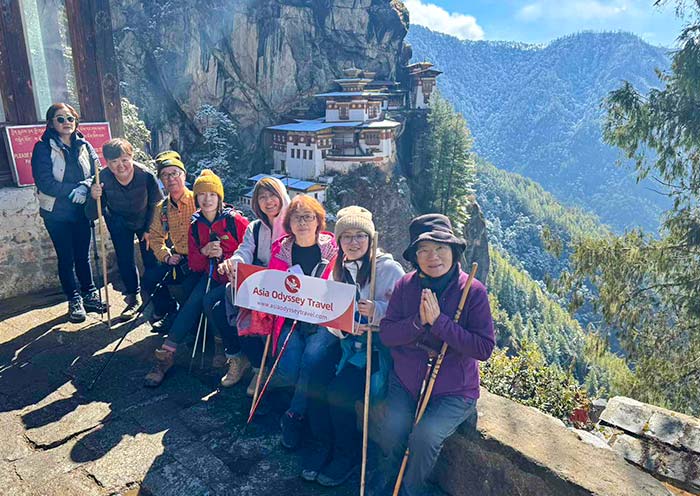- Highlights
- Itinerary
- Price
- Trip Notes
- Accommodation
- Photos
- Reviews
Immerse yourself in the wonders of China and Nepal on an unforgettable journey of slow discovery!
Join Asia Odyssey Travel for an extraordinary 21-day adventure that combines the best of China and Nepal, immersing yourself in the diverse wonders of these enchanting destinations. From ancient marvels to breathtaking Himalayan landscapes, this journey promises a lifetime experience.
Begin your expedition in Beijing, where you'll explore the iconic landmarks and delve into the rich history of the Chinese capital. Travel onward to Xian, known for its ancient wonders, including the Terracotta Warriors. But the real highlight awaits as you board a slow scenic train from Xian to Lhasa via the awe-inspiring Qinghai Tibet Railway, an engineering marvel that takes you through stunning landscapes.
In Tibet, embark on an in-depth tour, discovering the mystical land's monasteries, palaces, and natural splendors. And then, your adventure continues as you venture into Nepal, exploring the golden triangle cities of Kathmandu, Pokhara, and Chitwan. Marvel at the Himalayan peaks and immerse yourself in the vibrant culture of Nepal.
Rest assured, your journey will be seamless from start to finish. All necessary permits and services are included, ensuring a smooth transition from Beijing to Kathmandu. Book now!

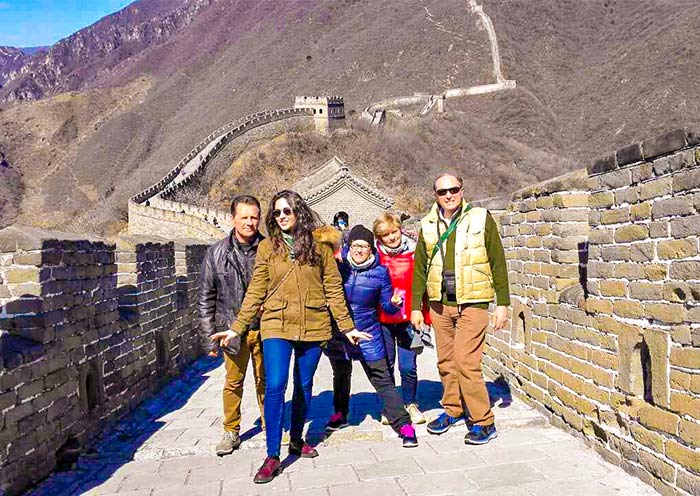
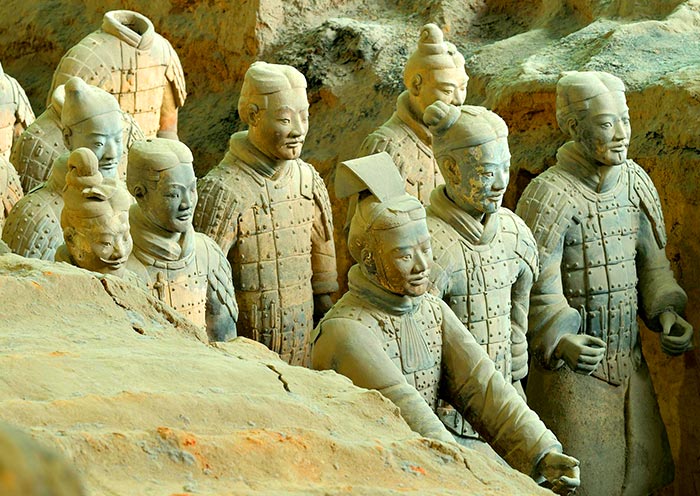
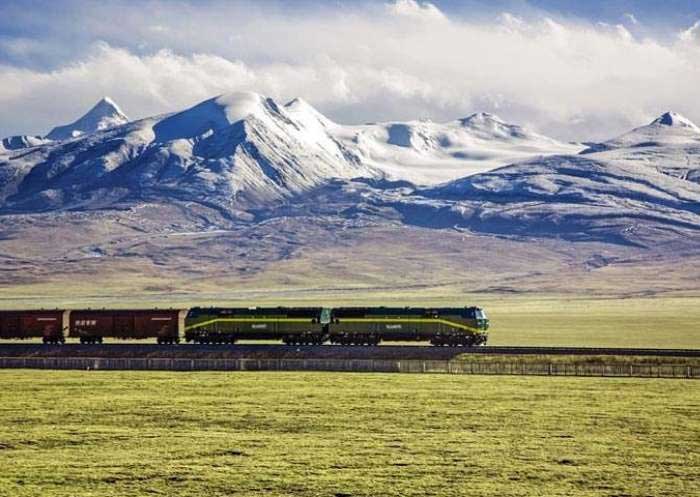
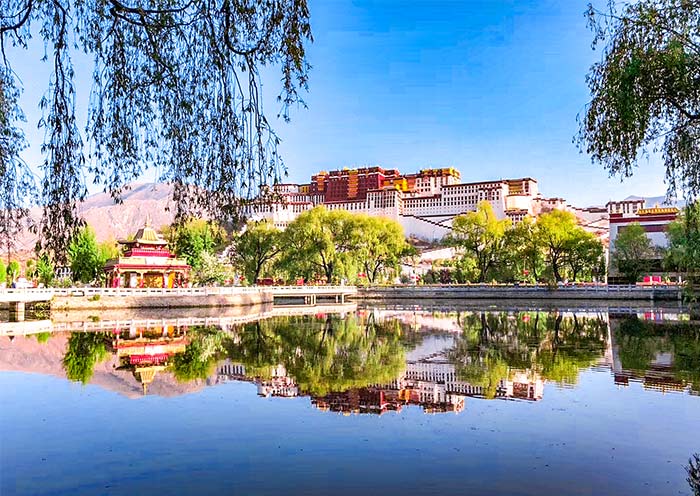
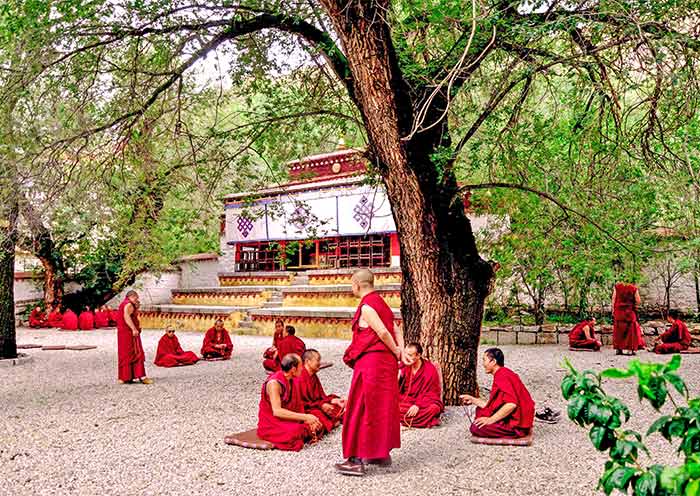
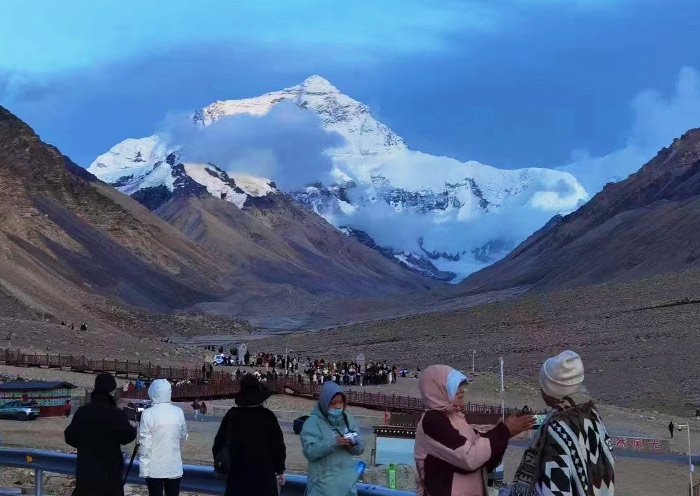

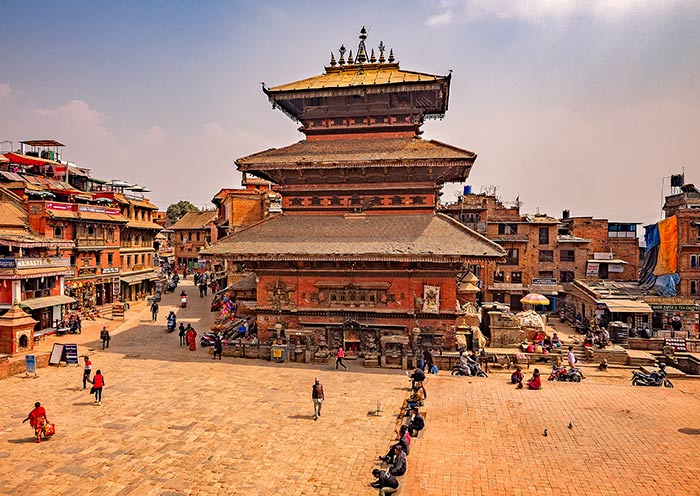



Itinerary at a Glance
Beijing (4 Days)
Forbidden City, Mutianyu Great Wall, Tian’anmen Square, Summer Palace, Bird’s Nest and Water Cube
Xian (2 Days)
Terracotta Warriors, Giant Wild Goose Pagoda, Ancient Wall, Muslim Quarter, Hanfu Experience, Grand Tang Dynasty Ever Bright City; Xian train to Lhasa via Qinghai Railway
Lhasa (3 Days)
Jokhang Temple, Barkhor Street, Sera Monastery, Potala Palace, Drepung Monastery
Shannan & Gyantse (1 Day)
Yamdrok Lake, Karola Glacier, Perklor Monastery
Shigatse (0.5 Day)
Tashilunpo Monastery
EBC (1.5 Days)
Rongbuk Monastery, Everest Base Camp, Gyawu La Pass
Gyirong / Gyirong (1 Day)
Gyirong Border to Nepal
Pokhara (2 Days)
Phewa Lake, Old Pokhara, Sarangkot Sunrise, Devi's Fall, White Peace Pagoda, Gupteshwor Mahadev Cave, International Mountain Museum
Chitwan (2 Days)
Chitwan National Park
Kathmandu
Itinerary Day by Day
Nihao! Welcome to Beijing, the capital city of China! Upon your arrival at the airport/train station in Beijing, the tour guide and driver will meet and greet you at the exit, and then escort you to the well-selected hotel in downtown Beijing. The rest of the day is free on your own so you can have a good rest for the jet lag or explore by yourself around your hotel.
Arrival Ideas:
Beijing is well connected by air and high speed rail. There are two airports - Beijing Daxing International Airport and Beijing Capital International Airport operating many international and domestic airlines. Travelers can go to Beijing by air from most cities of China, like Hong Kong, Shanghai, Guangzhou, Chengdu, Xian, Guilin, Hangzhou, Kunming, Wuhan, Xiamen, Guiyang, Chongqing, and Lanzhou. In addition, travelers can take the high speed train to Beijing from Xian (4-5 hours), Shanghai (4.5-6 hours), Zhengzhou (2.5-3 hours), Wuhan (4-5 hours), Harbin (5-5.5 hours), etc.
Free Time Ideas:
You are welcome to ask your tour guide for some useful tips to spend your free time based on your time and interest.


Today you will spend the whole day exploring the ancient citadel Beijing through China’s famous landmarks, epic imperial grandeur and royal gardens.
After breakfast, your guide will pick you up at your hotel and then head to Tian’anmen Square, which is the world’s largest public square and also the symbol of China. It has witnessed many big events in China over the past decades and from here you can take good pictures of Tiananmen Gate showing on CCTV News every day.
Walk across the square and you will visit the might and splendor of the awe-inspiring Forbidden City, the world’s largest palace complex and one-time home to 24 emperors of China. Listed as a world heritage site, Forbidden City has about 500 years’ history, and served as the political and ritual center of China during the Ming (1368-1644) and the Qing (1644-1911) dynasties. With over 8,728 rooms, the Forbidden City is not only China’s largest and best-preserved collection of ancient buildings, but also a city within the city, like the Vatican in Rome. Enter through Meridian Gate and visit along the central axis to ensure you won’t miss any highlighted palaces. You can admire its brilliant architecture and numerous ancient art treasures while listening to your guide and learning more about the emperors’ stories hidden inside the Imperial Palace. Later, if energy permits, take another 15-minute walk up to Jingshan Park, where you can have a magnificent panorama of modern Beijing and princely views over the russet roofs of the Forbidden City.
In this afternoon, you can enjoy the relaxing time exploring the ordinary local life through the old Hutongs. Take a rickshaw tour to travel through the narrow alleys with many featured shops standing on both sides.


In this morning, you will head northwest of Beijing (about 1.5-2 hours’ drive, 73km) to the Great Wall at Mutianyu. The Great Wall boasts a history over 2,000 years and stretches more than 3,000 miles across several provinces of northern China, making it one of the most impressive ancient masterpieces on the planet. Mutianyu Great Wall is connected with the Jiankou Great Wall in the west and the Gubeikou Great Wall in the east. Mutianyu is the longest and best fully-restored Great Wall with fewer tourists and is also famed for its 23 Ming-era watchtowers and stunning views. Take the cable car up to the 14th watchtower and then enjoy the memorable hiking time on the wall while visiting its western route. With the green pines and cypresses covering the surrounding area, and the winding wall standing majestically on the vast land, you will capture the most stunning natural scenery in this section. Challenge yourselves while climbing up to the 20th watchtower where you could fulfill your Great Wall dream. Cherish the chance and take photos as many as you like!
After the once-in-lifetime experience, head back to downtown Beijing and have the chance to take photos with the exterior of the Bird's Nest (Beijing National Stadium) and Water Cube (Beijing National Aquatics Center). They were both designed for the 2008 Beijing Olympics and used for the 2022 Winter Olympic Games. After that, transfer back to your hotel and have a good rest tonight.
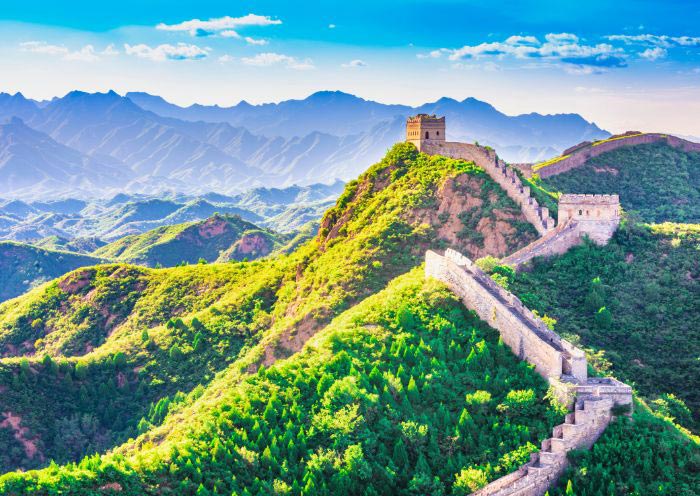
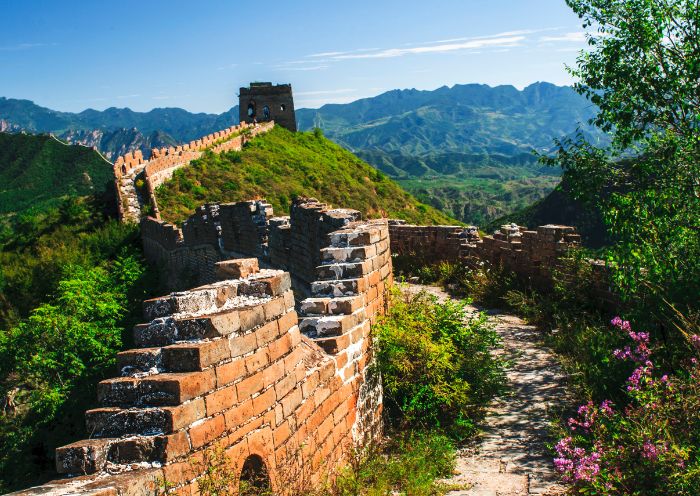
After breakfast, drive to the “Museum of Royal Garden” - Summer Palace, which used to be the resort for royal families to flee summer heat. The grounds, temples, gardens, pavilions, lakes, bridges, gate-towers, and corridors are a marvel of landscaping. Enjoy the leisure walk and take your time to appreciate the imperial architectures, hilltop views, and beautiful lakes, which offer a pastoral escape into the landscapes of traditional Chinese painting.
After the tour, you will be escorted to the train station for a high-speed train to Xian (about 4.5-5.5 hours). Welcome to Xian, the capital of 13 ancient China dynasties! Upon your arrival at the train station, the tour guide and driver will greet you at the exit, and then escort you to the hotel in Xian.


After breakfast, drive about 40 km to the Terracotta Warriors Museum (Museum of Qin Terra-cotta Warriors and Horses). Here, you can discover the Terracotta Warriors and Horses: an army of around 8,000 soldiers, 130 chariots, 520 horses, and 150 cavalry entirely made of baked clay or terracotta. This Terracotta Army has silently stood guard over the soul of China's first emperor, Qin Shihuang, for more than 2,000 years. Until an accidental local farmer digging a well in 1974 struck upon one of the greatest archaeological discoveries in the world. Upon stepping into this "underground military museum," you will encounter two awe-inspiring shocks. The first is the magnitude of the archaeological marvel before you: thousands of life-sized clay soldiers, horses, and chariots arranged in battle formations. The second shock is that the faces of thousands of Terracotta Warriors are still vivid, despite the passage of more than 2,000 years. Each figure is unique, with distinct postures, hairstyles, and armor, making them seem to come back to life in the next moment.
During your visit, an knowledgeable guide can take you to highlights of the museum, including Pit One, Pit Two, Pit Three and provide valued explanations and insights that you might not get from simply observing the sculptures on your own. Afterward, you will have a rare opportunity to create your own miniature Terracotta Warrior under the guidance of a local potter. This will allow you to appreciate the craftsmanship and techniques of the Qin Dynasty as well as gain a deeper understanding of how terracotta warriors were made.
After lunch, drive back downtown to visit the Giant Wild Goose Pagoda which is one of Xi'an's most recognizable landmarks and a symbol of the magnificence of the Tang Dynasty. This seven-story pagoda, standing in the tranquil Da Ci'en Temple, is one of China's best examples of a Tang-style pagoda (squarish rather than round). It was completed in AD 652 to house Buddhist sutras brought back from India by the monk Xuan Zang. His travels inspired one of the best-known works of Chinese literature, Journey to the West. While at the Giant Wild Goose Pagoda, you'll also have the opportunity to immerse yourself in the local culture by trying on Hanfu (traditional Chinese clothing), and capture memorable moments in Hanfu.
As evening falls, visit the Grand Tang Dynasty Ever Bright City which showcases the life and times of the Tang Dynasty. The light show is decorated with structures, creating a vibrant and immersive atmosphere that transports you back to the times of the Tang Dynasty, providing a magical experience of walking through time.
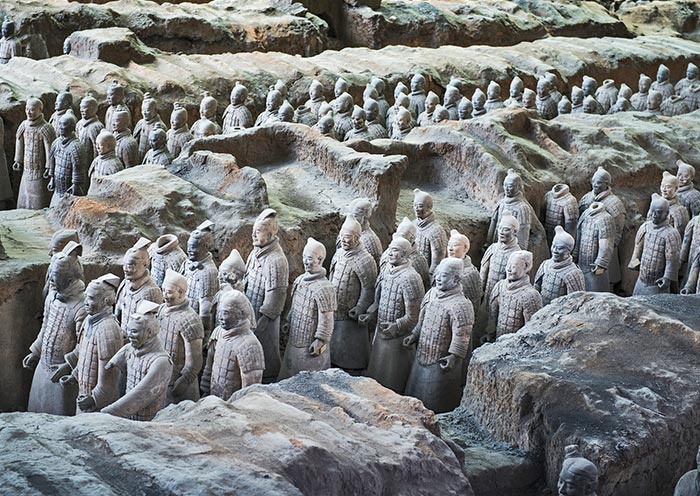

In this morning, pay a visit the Ancient City Wall. Xi'an is one of the few cities in China where the imposing old city walls still stand. Built in 1370 during the Ming dynasty, the magnificent 12-meter-high walls, form a rectangle with a perimeter of 14 kilometers. To get an idea of Xi'an's former grandeur, take a leisurely walk on the wall. Each step here is a chance to resonate with the echoes of history that the stones reverberate. Or cycling ( optional ) the full extent of the wall offers a rewarding panoramic view of the city - a tangible contrast between the old and new, and a testament to Xi'an's historical significance and modern vibrancy. Once you've delved into the city's historical narrative, don't forget to indulge in the delicious food and experience the vivid local life. The Muslim Quarter is a paradise mixed with different local snacks and Muslim culture, and you can surely taste the most authentic local food there. Don't miss the Great Mosque, an architectural gem that beautifully blends Islamic and Chinese design styles. After the tour, you will be escorted to a well-selected hotel in downtown Xi'an.
The rest of the day is free for you to explore Xi'an on your own.
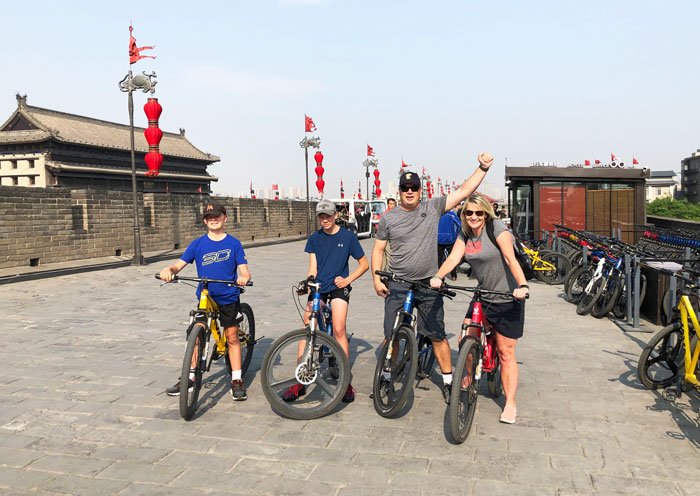

Today, you will embark on a train journey from Xian to the holy city of Lhasa. Our tour guide will accompany you to Xian Train Station to begin this remarkable experience of taking the highest train ride in the world. You'll spend the night onboard the train, so have a good sleep and our dream of Tibet will come true tomorrow.
Currently there are two daily trains available.
1.Train No. Z265, departs at 19:55, arrives Lhasa at 12:29, duration: 31:02 hrs
2.Train No. Z165, departs at 11:20, arrives Lhasa at 18:29, duration: 31:26 hrs
Note: Please be sure to bring your Tibet Permit which will be checked when you board the train.
Useful Tips:
1.Sleeping Berths: The train has four types of sleeping berths, including soft sleeper, hard sleeper, soft seat, and hard seat.
2.Dining: The train offers a variety of Chinese and Tibetan dishes in dining cars. If Chinese food is not to your taste, you can bring some instant food.
3.Toilets: The train has both Western-style and squat-style toilets available in each soft sleeper carriage. However, passengers should be prepared for their towels, toilet paper, and hand sanitizer.
4.Oxygen Supplies: From the Xining section, all passengers usually are required to transfer to another train that is equipped with an oxygen supply system to help passengers acclimate to the high altitude of the Tibetan Plateau.


You are riding on Qinghai-Tibet Railway - the world’s highest railway. Pull up a window seat to view Himalayan mountains, shimmering lakes, plains dotted with yaks and herders’ tents, and barren deserts, as you inch slowly up onto the high plateau. Keep your eyes peeled throughout the journey for antelope, foxes and wild asses, plus the occasional nomad. After the whole day on the train enjoying the views outside, the train finally arrives in Lhasa.
Tashi Delek! Welcome to Lhasa, the capital of the Tibet Autonomous Region! Upon your arrival at the airport in Lhasa, the tour guide and driver will meet you at the exit, and then escort you to the hotel in downtown Lhasa (100km, about 1.5 hours’ drive) . You can have a good rest to get used to the altitude (3,650m) in your hotel and get ready to explore Lhasa with your guide the next day.
Kind Reminds:
- It is good to avoid altitude sickness by slowing down, keeping warm, drinking water frequently, avoiding showers for the first one or two days, taking it easy, and sleeping well.
- You should always follow your doctor's advice regarding altitude based on your health condition.
- Be sure to let your guide or the hotel staff know whenever you feel unwell or need help. The people there are always willing to help and are good at dealing with altitude sickness.
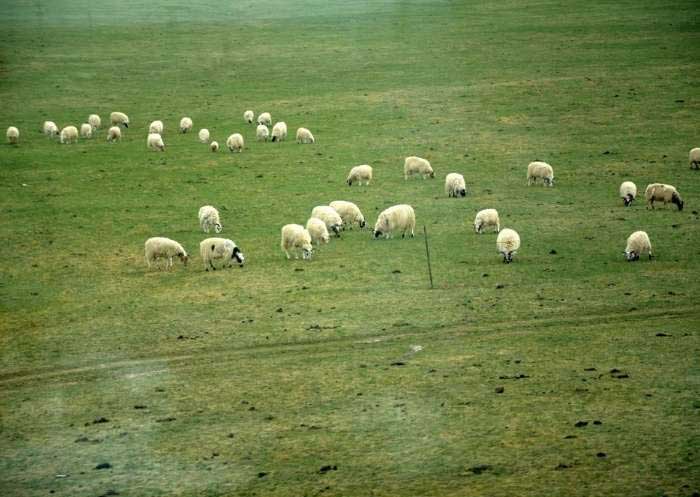

This day's itinerary features three significant Lhasa landmarks, offering a glimpse into the city's rich cultural and religious heritage.
In the morning, you can walk into Potala Palace (World Heritage), the traditional residence and winter palace of the Dalai Lama (1649-1959). It takes 365 steps from potala gate to reach the Red Palace which is the highest palace in the world at an altitude of 3,700m. Through the principal halls, chapels, and shrines of past Dalai Lamas in the Red Palace, you will be astonished and touched by its remarkable paintings, gorgeous jeweled works, skilled carving, colorful ornamentation, and the mystery stories behind the treasures. Inside the Potala Palace you will meet lots of Tibetan pilgrims who come all the way from afar to this sacred site to pray as their life time destination. You can also ask your guide to share more information about Songtsen Gampo, the 33rd king of Tibet, who first build the Potala Palace in the 7th century for his marriage to Princess Wencheng of the Tang Dynasty. (Note: We may adjust the visit order due to the visiting time of your Potala Palace Ticket. All visitors must visit the Potala Palace with a tour group while staying inside for an hour. No photo inside.)
Later, you will explore Lhasa by visiting Jokhang Temple, a world cultural heritage site renowned for its brilliant architecture, culture, art, and history. Located in the heart of Lhasa for over 1300 years, the Jokhang Temple is an important pilgrimage site for Buddhists from all over the world. Famed as the spiritual center of Tibet, it is said that the Jokhang Monastery was built for King Songtsen Gampo's two brides: Chinese Princess Wencheng and Nepalese Princess Bhrikuti. "Jokhang" means "House of Buddha", and it houses a life-size statue of the 12-year-old Sakyamuni, which is considered a treasure of the Buddhist world. This is why Buddhist pilgrims consider it the holiest destination. The Jakhong temple is also renowned for its beautiful architecture. You can admire the intricate carvings, colorful murals, ornate decorations, and details of the building, which is a masterpiece of Tibetan architecture. Time seems to stand still as you watch people pray in front of the temple during the day and night. (Please note that the visit order may be adjusted based on the reservation of your Jokhang Temple Ticket Reservation.)
Afterward, head back to downtown Lhasa for a walk on busy Barkhor Street near the Jokhang Monastery, which was a place for Buddhists to do a kora (pilgrim circuit) in ancient times. Nowadays, it has become a thriving local market where you can drink a pot of yak butter tea, dress in Tibetan clothes for photos, and pick up some local Tibetan, Nepalese, and Indian handicrafts and souvenirs.


Today, you will have the great opportunity to immerse yourself in the vibrant monastic life of Lhasa with visits to Drepung and Sera monasteries.
First, drive about 35 minutes (10-12km) to visit the Drepung Monastery, which was the largest Tibetan monastery (of the Gelug Sect) in Lhasa. It used to be the palace of the Dalai Lama before he moved to the Potala Palace in the 17th century. Today, it is famous for the Drepung Shoton Festival held each August, where people come to offer yogurt to the monks who have finished their 100 days of meditation. You can also witness the grandest Buddha/Thangka Unfolding Ceremony. Besides the unique architecture and amazing buildings, you can watch monks debating in Tibetan Buddhism, which is vibrant and active with expansive gestures, clapping, and stamping. After visiting the Drepung Temple, you will have about a 2-hour Tibetan culture tour, which includes an introduction, Tibetan incense making, and block printing.
In the afternoon, drive approximately 13km (30-40 minutes) to visit Sera Monastery, which is one of the three great Gelug university monasteries of Tibet. It offers the opportunity to experience Tibetan Buddhism up close. The highlight of Sera Monastery is watching the monks' debate, which takes place around 15:00-17:00 (except on Sundays). The debate is an interesting form of exchange, where one monk acts as the questioner, standing while the answerer or group of answerers sit. The standing monk asks questions and slaps his palms and stomps, each action having a special meaning, such as activating wisdom, and are not meant to be aggressive. You will also have the chance to attend prayer ceremonies, visit meditation halls, and learn about the monastic way of life. It is a must-visit destination to gain insight into the beliefs and practices of Tibetan Buddhism.
After the tour, drive back to Lhasa for accommodation.

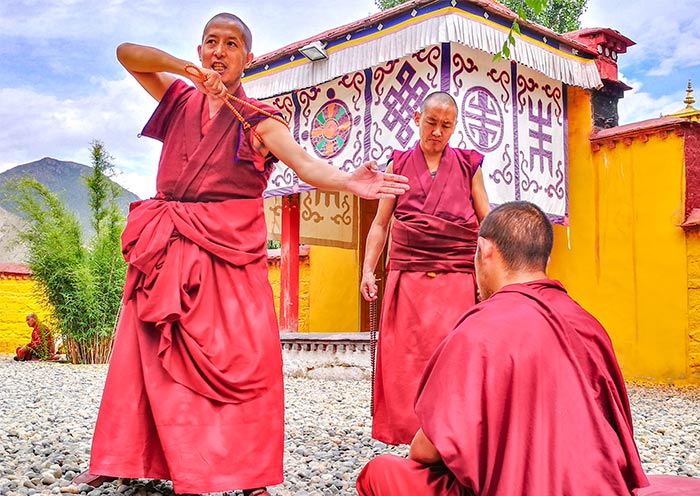
Today, drive about 7.5 hours (400km) from Lhasa to Shigatse (3,850m) via Gyantse (3,950m). You will visit two amazing natural landscapes - Yamdrok Lake and Karola Glacier on the way, then after a visit of Pelkor Monastery in Gyantse, you will reach Shigates for overnight.
In the morning, you will head to the Kampala Pass (4,797 meters) and have a breathtaking view of Yamdrok Lake (a freshwater lake) down below as well as spectacular views of the holy Mt. Nyenchen Khangsar (7,206m) in the distance. It is one of the four largest sacred lakes in Tibet along with Lake Lhamo Latso, Lake Manasarovar, and Lake Namtso. And Lake Yamdrok is said to be able to help Tibetans find the reincarnated soul of the Dalai Lama. You will be happy to see dressed-up Tibetan mastiffs/dogs, goats, and yaks there. It is optional for you to pay 5-10 yuan to pose with and take photos of them, for local Tibetans, it’s a subsidy income for their family.
Then, drive to visit one of the most beautiful Glaciers in Tibet - Karola Glacier, the location of the film Red Valley (Hong He Gu). As one of Tibet's three major continental glaciers, backed by the southern slope of Naiqin Kangsang Peak (7,191 meters), one of the four highest peaks in Tibet, this white glacier is also the source of the eastern part of the Nianchu River. The **Karola Glacier (**5,012m) is only 300 meters away from the highway connecting Lhasa to Gyantse town. You can view it right off the highway from your car. Sure you can easily walk to the foot of the charming glacier which shape is like a frozen waterfall right above the road and you. Besides the fantastic hike to the Karola Glacier, on the opposite side of the road, you can appreciate the beautiful snow-capped mountain of Mt Kalurong.
Karola Glacier Visiting Notes:
- The altitude at the glacier scenic spot is about 5,012m, be sure to slow down to avoid altitude sickness.
- The public toilet at the glacier is very basic.
- Local people would ask you to take photos with them for a fee. Be sure to ask before taking photos to avoid potential little troubles.
After that, drive on the Friendship Highway( between Tibet and Nepal) to Gyantse, the third largest city of Tibet after Lhasa and Shigates, and visit Pelkor Monastery.
Pelkor Monastery (Palcho Monastery) is an important site for Tibetan Buddhism, as it houses different sects including the Gelug, Sakyapa, and Kadampa. Pelkor Monastery, with a history over 600 years, is also renowned for its impressive architecture, which blends Tibetan, Nepalese, and Han Chinese styles. One of the main attractions of Pelkor Monastery is the Kumbum Stupa (Gyangtse Kumpum), which is a nine-story tower adorned with thousands of images of Buddhas and Bodhisattvas. It is said to be the largest such structure in Tibet. Visitors can enjoy their time by witnessing the daily rituals and prayers of the monks, and have a panoramic view of the surrounding landscape from the top of the Kumbum Stupa (100-Thousand-Buddha Pagoda). You can also catch the far view of Gyantse Fortress (Gyantse Dzong).
After that, drive about 90km to reach Shigatse for overnight.


This morning, drive to Rongpuk Monastery (5,100m) which is 340km (8h) from Shigatse via a visit of Tashilhunpo Monastery.
Tashilhunpo Monastery is founded by His Holiness the 1st Dalai Lama, Gyalwa Gedun Drup in 1447. In Tashi Lunpo Monastery, you can unveil the traditional seat of successive Panchen Lamas, Tibet's second-highest incarnation. Pay a visit to the ancient tombs of the fourth and tenth Panchen Lama and the chortens, which hold the bones and remains of the sacred Tibetan lamas. Learn more from your guide about Panchen Lamas and Dalai Lamas while appreciating the brilliant religious painting on Tibetan architecture, listening to the Tibetan Buddhism chanting by local monks, and even participating in the kora like locals. Don’t forget to hike up to the top of the monastery and have a stunning bird view of the monastery itself and Shigatse City.
Departing from Shigatse, after about 4.5 hours of driving (240km), you would get your first glimpse of Mt. Everest from the Gyawu La Pass (5,200m), between Lhatse and Shelkar. Apart from Mt. Everest, you will be marveled at the zigzag road that looks winding to the end of the world. On the road, you may see local people biking or hiking all the way to Everest Base Camp, for them reaching the base of the world's highest mountain is a must do goal or holy belief that is worth the effort.
After enjoying the beautiful and unique scenery on the pass with incredibly snow-capped mountain ranges, blue skies, floating high clouds, and endless grasslands, it is time to head to Rongbuk Monastery (about 3.5 hours,122km) which is the highest monastery in the world and the best site to view the north side of Mt. Qomolangma (Mt. Everest), also known as the Third Pole on Earth. With both monks and nuns in residence, Rongbuk Monastery is a must-visit for spiritual travelers, and you will find it to be a photo-worthy destination. It used to be an area of meditation huts, and you can find hermitage meditation caves with a history of over 400 years, dotting the cliff walls all around the monastery and the valley. You can admire the magnificent sunset on Qomolangma's steep north side in good weather. The humble stupa at the monastery is the same one that can be seen on most postcards and posters of Mt. Everest.
Overnight in a tent guesthouse at Rongbuk Monastery or EBC. If you venture out at night, you will be rewarded with a heavenly starry night.
Notes:
- Travelers can only go as far as the Rongbuk Temple area rather than a few kilometers farther as before. But it’s no big difference in terms of viewing Mt. Everest.
- Today’s food and lodging is very basic. Due to the high altitude, it is possible that you may have some symptoms of altitude sickness. We recommend that you stay well hydrated, relax and enjoy the beautiful scenery to minimize your symptoms.


Try your luck at witnessing the breathtaking sunrise of Mount Everest in the early morning (Note: The sunrise usually starts around 6:30 am to 7:00 am). After breakfast, head to Everest Base Camp. It is a 4 km hike from Rongbuk Monastery to Everest Base Camp (5,200m), which is the closest place for ordinary tourists to view the world’s summit. (Note: It is optional to take sightseeing bus to EBC. Self-pay for the bus.) Take your time at Everest Base Camp to enjoy the amazing view of the peak of Mount Everest (8,848m), the highest peak in the world.
After the tour, you and your group will leave Mount Everest Base Camp and be transferred to Gyirong Town, where the Gyirong Port is located, via a part of the Friendship Highway, also known as the China-Nepal Highway. On the way, you will get good chance to see the majestic and awe-inspiring Mount Shishapangma, about 120km from Mount Everest and located in the Himalayas near the Nepal-Tibet border. At an elevation of 8,027 meters, Mount Shishapangma is the 14th highest mountain in the world and the only 8,000-meter peak that lies entirely within Tibet. The mountain is known for its striking appearance, with its towering peaks and massive glaciers.
Stay overnight in Gyirong Town.


Today, you will across the Gyirong Border and head to Kathmandu(1,400m) via a mountain road. Although it is only 150km from Rashuwaghadi to Kathmandu, it may take more than 6 hours due to the bad road conditions.
Welcome to Kathmandu, the capital of Nepal! Upon arrival, your will be check in at your hotel in Kathmandu. Once you have settled in, you are free to explore the city at your leisure for the rest of the day.
Kathmandu is the largest city in Nepal, located in the Kathmandu Valley, which is surrounded by the majestic Himalayan mountain range. The city boasts a rich cultural and historical heritage, with numerous ancient temples, palaces, and monuments. Its architecture beautifully blends traditional Newari style with modern designs. Kathmandu is renowned for its vibrant street life and bustling markets, such as the Asan Bazaar and the Thamel district (street), offering a wide range of goods and services. The city's rich festival culture, stunning architecture, and friendly people make it a popular destination for travelers from around the world.
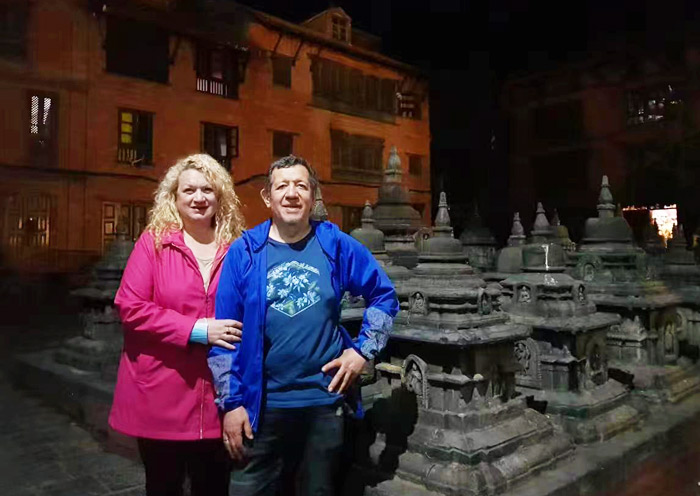
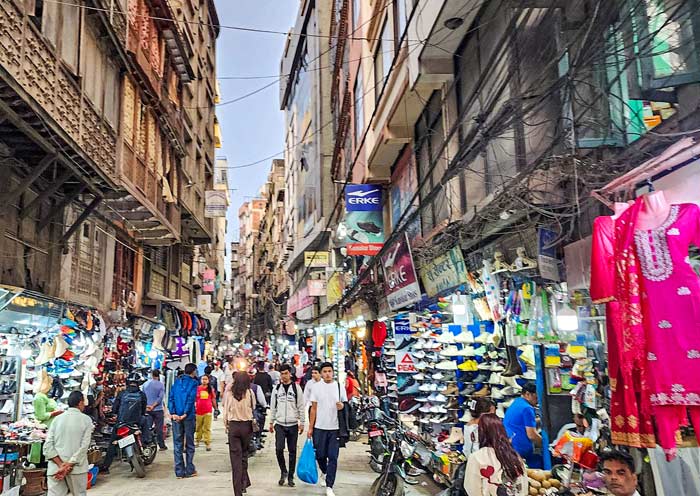
Today, you will explore 3 World Heritage Sites in the Kathmandu Valley. Begin by visiting Kathmandu Durbar Square (World Heritage), one of three royal palace squares in the Kathmandu Valley. You won't miss the Hanuman Dhoka, an iconic red palace adorned with intricate wooden carvings, which served as the residence of Malla Kings for centuries. Most of our guests arm to visit Kumari Ghar (House of the Living Goddess) and Taleju Temple (closely linked to the tradition of the Kumari). Through the Kumari Chowk, you may have the opportunity to catch a glimpse of the Kumari (a young girl worshiped as the living goddess Durga), who is revered by both Hindus and Buddhists in Nepal. The Kumari is selected from a Buddhist family through traditional tests and is believed to be the incarnation of the Goddess Taleju (Durga) until she reaches menstruation age. Dashain Festival (October; a 15-day festival) and Tihar Festival (November; Festival of Lights) offer the best chances of seeing the Kumari in public processions. The Bhairav Statue is also one of the best spots to experience Hindu culture, where you can witness local people worshipping the fearsome god Bhairav, the protector of the city.
Then, you will visit the Pashupatinath Temple (World Heritage) - a stunning pagoda-style Hindu temple dedicated to Lord Shiva. As the oldest Hindu temple in Nepal, dating back to around 400 B.C., the main temple complex located at the Bagmati River is only open to Hindus. However, non-Hindus can observe the temple from the terraces on the east side of the river. Pashupatinath is often regarded as the Nepal equivalent of Varanasi in India. Originating in the Himalayan Mountains, the Bagmati River is believed to possess purifying qualities for the soul and holds immense sacred significance for both Hindus and Buddhists. Along the banks, there are platforms dedicated to cremation rites. For generations, families have brought the bodies of their loved ones who have passed away to the river, washing their feet and sprinkling drops of water on their faces. It is believed that the river washes away a person's sins and facilitates their journey to heaven. The bodies are then cremated along the riverbanks, and the ashes are scattered into the water. This is the most profound scene at Pashupatinath, evoking endless contemplation on life and death. From across the river, you will notice numerous hermit caves to the north of the cremation platforms. For centuries, hermits and ascetics have been meditating in these caves, and this practice continues to this day.
Next, move on to Swayambhunath Temple (Stupa), also known as the Monkey Temple due to the swarms of monkeys that inhabit the area. Located on a hilltop on the western edge of Kathmandu, Swayambhunath Stupa (World Heritage) is visible from a distance. You can climb the steep stairs to reach the top of the hill, where you can enjoy panoramic views of Kathmandu Valley and even the Himalayas on clear days. As a must-visit destination in Kathmandu, the stupa is believed to have been built over 2,500 years ago, making it one of the oldest Buddhist sites in the world. The base of the stupa is surrounded by colorful prayer flags fluttering in the wind, carrying prayers and blessings to the heavens. It is a sacred pilgrimage site for both Hindus and Buddhists, signifying the coexistence of diverse beliefs in Nepal while showcasing Newari artistic heritage. Take your time to indulge in the temple's serene and spiritual ambiance, basking in its captivating architecture and embracing its natural beauty.
Lastly, you will head to Bodhnath which is a focal point for Tibetan Buddhism in Nepal and home to Boudhanath Stupa (one of the largest Buddhist stupas in the world). You can join the Tibetan pilgrims, and walk around the Boudhanath Stupa (World Heritage) clockwise, turning the prayer wheels under the protective gaze of Buddha's eyes. This is a way to show respect for the Buddha and to accumulate merit. The Boudhanath Stupa is 36 meters tall and 108 meters in diameter, designed as a mandala to represent the Buddhist cosmos. The structure is dominated by a massive dome, at the top of which sits a square tower adorned with the omnipresent eyes of Buddha, gazing serenely in the four cardinal directions. These eyes symbolize the omniscience of Buddha, offering protection and wisdom to all who seek refuge. Surrounding the stupa, prayer flags flutter in the wind, carrying mantras and prayers for peace, compassion, strength, and wisdom far and wide. In the evening, thousands of butter lamps illuminate the plaza surrounding the stupa. Equally fascinating are the surrounding streets, lined with Tibetan monasteries and shops selling religious art, Tibetan handicrafts, and traditional Nepali items.
Stay overnight in Kathmandu.

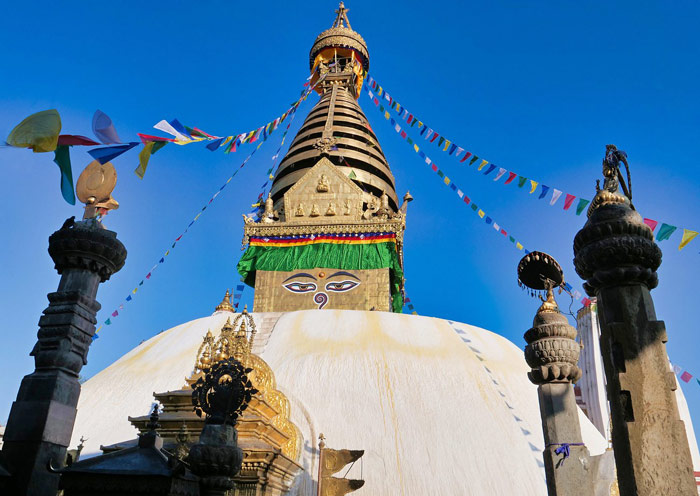
After having breakfast, it's time to leave Kathmandu and head towards Pokhara, which is about 201 kilometers away from the capital. The drive usually takes around 5-7 hours. (Transfer Option: To save time and avoid a long drive, you can take a direct flight from Kathmandu to Pokhara, which lasts for about 20-30 minutes.)
Pokhara, located in the northwest of Kathmandu, is renowned for its breathtaking natural beauty. Nestled in a picturesque valley, it offers panoramic views of the Himalayan mountain range, including the magnificent peaks of Annapurna and Dhaulagiri. Pokhara is a hub for adventure enthusiasts, providing numerous opportunities for trekking in the nearby Annapurna region. Whether you are a beginner or an experienced trekker, there are a variety of trekking routes to choose from. Additionally, Pokhara offers thrilling activities such as paragliding, zip-lining, and white-water rafting, allowing you to experience the awe-inspiring landscapes in an adventurous way.
Upon arrival in Pokhara, you will check into your hotel and take a short rest. In the afternoon, you will have the opportunity to enjoy a boating experience on Phewa Lake, which typically lasts for about 1-2 hours. Phewa Lake, the second largest lake in Nepal, is a magnificent freshwater lake surrounded by verdant hills and the awe-inspiring Annapurna mountain range. The tranquil waters of the lake beautifully reflect the majestic peaks, creating a picturesque setting that is perfect for boating. As you paddle or sail across the calm waters, you can immerse yourself in the serenity of the surroundings, providing a chance to relax, unwind, and appreciate the natural beauty that surrounds you.
While navigating the lake, keep an eye out for various colorful bird species, including kingfishers, cormorants, egrets, and herons. These beautiful creatures gracefully soar and dive around the lake, adding to the enchanting ambiance. At the center of Phewa Lake, you'll find a small island that is home to the Tal Barahi Temple, dedicated to the Hindu goddess Durga. This temple is a popular pilgrimage site, and from your boat, you can admire its pagoda-style architecture and gain a unique perspective of this religious landmark. As the sun begins to set, the atmosphere becomes even more charming, offering a beautiful and memorable moment to cherish.
Later, we will transfer you to the old part of Pokhara, where you can immerse yourself in the authentic local life of the city. Take a leisurely stroll through the bustling streets, lined with a variety of shops showcasing the rich influences of Buddhism and Hinduism. You'll also come across traditional Newari houses, adding to the cultural charm of the area. Along your walk, you'll encounter the sacred Bhimsen Temple and the revered Shree Bindhyabasini Temple, offering you a glimpse into the spiritual heritage of Pokhara.
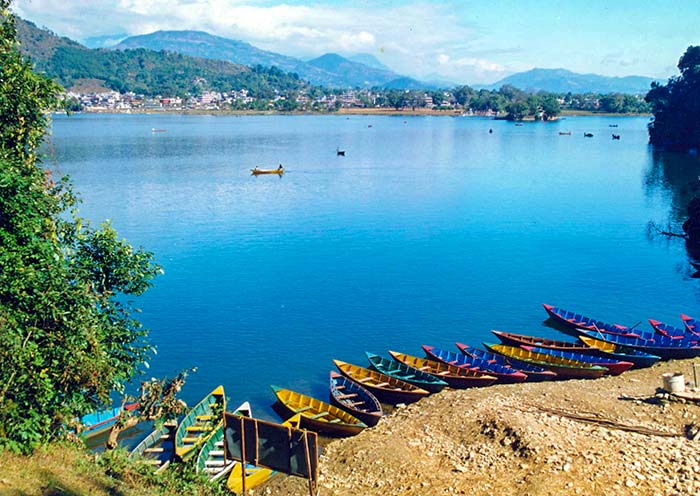

After breakfast, you will explore the International Mountain Museum. Here, you can expand your knowledge about Nepal's majestic mountain peaks and discover the tools utilized by the pioneering Himalayan mountaineers. Additionally, the museum offers engaging exhibitions and presentations that delve into the rich history, vibrant culture, geographical features, and diverse flora and fauna of the Himalayan region.
Later, you will visit Devi's Fall, also known as Patale Chhango. It's not only the cascading water that attracts visitors, but also the unique underground tunnel it carves, providing an adventurous glimpse into the "underworld." The waterfall originates from the Mardi River and plunges down a 167-foot (51-meter) cliff, creating a mesmerizing spectacle. The water continues to carve a tunnel that stretches approximately 500 feet (150 meters) in length and descends 100 feet (30 meters) underground. This offers a captivating opportunity to capture stunning photos of the waterfall, the surrounding landscape, and the vibrant flora. Next to Devi's Fall is Gupteshwor Mahadev Cave, where there is a giant stalagmite considered to be the symbol of Lord Shiva.
Next, you will enjoy a trip to the White Peace Pagoda, also known as Shanti Stupa, a magnificent Buddhist monument situated atop Ananda Hill in Pokhara, Nepal. Constructed in 1999 by Japanese monk Morioka Sonin, this pagoda stands as a symbol of global peace and unity. On the second tier of the pagoda, you will find four statues of the Buddha, graciously gifted by different countries. Each statue represents significant events in the life of the Buddha. This iconic landmark offers awe-inspiring panoramic vistas of the Annapurna mountain range, Phewa Lake, and the Pokhara Valley.
Optional experience: If you're looking for thrilling outdoor activities to try in Pokhara, we've got you covered! Feel free to share your ideas with us, and we'll be more than happy to adjust the itinerary to include your preferred activities.
- Paragliding: Soar through the skies and experience the exhilaration of paragliding over the picturesque landscapes of Pokhara. Enjoy breathtaking views of the mountains and lakes as you glide through the air.
- Zip-lining: Get your adrenaline pumping with an exciting zip-lining adventure. Fly across the stunning valleys and forests, taking in the panoramic views from high above.
- Bungee jumping: Take a leap of faith and try bungee jumping in Pokhara. Plunge from a platform into the gorge below, experiencing an adrenaline rush like no other.
- Biking: Explore the enchanting beauty of Phewa Lake and old Pokhara on a bike ride.
- Canyoning: Descend through narrow canyons and cascading waterfalls in an adrenaline-fueled canyoning adventure. Abseil down cliffs, jump into natural pools, and navigate through the stunning natural landscape.
- Kayaking: Navigate the sparkling waters of Phewa Lake or the Seti River on a kayaking adventure. Enjoy the tranquility of the surroundings as you paddle through the pristine waters.
- Stand-up paddleboarding: Try stand-up paddleboarding on the calm waters of Phewa Lake. Enjoy a unique perspective of the lake, gliding along its surface while admiring the scenic surroundings.
- White-water rafting: Experience the thrill of white-water rafting on the Seti River. Navigate through exhilarating rapids and enjoy the stunning river scenery as you paddle downstream.
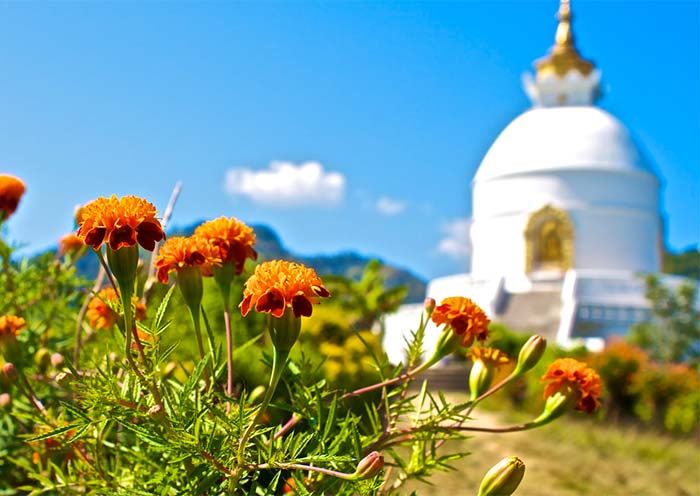

Start your day with an early morning drive to Sarangkot. After a 15-minute walk up the stairs, you will reach a fantastic viewpoint to witness the breathtaking sunrise. On clear days, you'll be able to see the awe-inspiring peaks of Dhaulagiri (8,167 meters), Machapuchhre (6,997 meters), Annapurna I (8,091 meters), Annapurna II (7,937 meters), Annapurna III (7,219 meters), and Manaslu (8,163 meters), along with a panoramic view of the Pokhara Valley. As the sun emerges from behind the mountains, the sky transforms into a mesmerizing blend of pink and orange hues, casting a golden glow upon the peaks. You'll have plenty of time to capture stunning photos and soak in the beauty of the surroundings. After the sunrise experience, drive back to your hotel, where you can enjoy a delicious breakfast.
After breakfast, take a scenic drive to Chitwan, which is about 170 kilometers away from Pokhara. The drive usually takes around 5-6 hours. (Transfer Option: To save time and avoid a long drive, you can take a direct flight from Pokhara to Chitwan, which lasts for about 30 minutes.)


Take a full day inside Chitwan National Park, immerse yourself in nature, enjoy the jungle activities for a memorable experience. As the largest wild animal park in Nepal and one of the biggest forest parks of Asia, the Royal Chitwan National Park is the best place to enjoy bird watching, jungle walking, jeep safari, and canoeing.
During your adventure in the park, you may spot the superstar of the park - the endangered greater one-horned rhinoceros. You can explore the jungle in an open jeep (jeep safari). This is more exciting because you will have more chances to see more wild animals than riding an elephant. In Nepal's Chitwan National Park, the most commonly encountered animals are spotted deer, crocodiles, peacocks, and various bird species. The next in line are the Asian one-horned rhinoceros, turtles, and monkeys. The most elusive animals to encounter are Bengal tigers, bears, and leopards. The journey takes about 4-5 hours, and if you can, go in the morning when the animals are more active.
Canoeing (1hour; Optional) along the Rapti River is a very popular way. Sitting on the boat with local guide to watch waterfowls, crocodiles, deer and even the Gangetic dolphin, is quite relaxing and memorable. Stay overnight in Chitwan.
Jungle Activities Time Table for Reference:
1. 6:30 AM: Jeep Safari in the jungle: (Duration:4-5 Hours)
Proceed for the Jeep Safari crossing the Rapti River by Patela Boat to start with from Bhimle army check post. There are two choices of routes available, which our naturalists pick upon their experience on current sightings and animal movement.
Route 1: Bhimle post - Sukhibhar post towards Kasara (park headquarter)
Route 2: Bhimle post - Reu River- Surung Khola
Route 3: Bhimle Post - Reu River- towards Khoria Muhan Post
2. 3:00 PM: Walking Safari: (Duration:2-3 Hours)
A walk inside the National park accompanied by an experienced naturalist and nature guide to explore the wildlife, flora & fauna and birding.
(Please note that the activities will be subject to change based on the weather situation and the time.)
Warm Tips:
1.Sunset: If the weather is good, you must go to the riverside to watch the sunset! Enjoy the priceless sunset on the "East Rapti River" with the locals.
2. Dress code: Long sleeves, long pants, sneakers, and a sun hat. First, it's for sun protection, and second, to avoid scratches while trekking through the jungle. Avoid wearing bright-colored clothes to prevent disturbing the wildlife. There can be a significant temperature difference between morning and evening, so remember to stay warm and bring insect repellent.
3. Equipment: Bring a camera with a telephoto lens and binoculars (useful for capturing and observing distant animals).
4. Elephant rides: Riding an elephant can be quite bumpy, and it doesn't allow you to venture as deep into the wilderness or see as many animals as a jeep safari.
5. Jeep Safari is prohibited during monsoon season by the park authorities from Jun. -Sept. and in some season it can prolong till Oct. Although jungle exploration in Chitwan is well-established, exercise caution and be careful once you enter the forest. Avoid speaking loudly and follow the instructions of your guide to prevent any trouble.
6. Chitwan has a tropical monsoon climate, with the rainy season occurring from June to September. While you can visit during other seasons, the best time to travel is from October to March.
7. Bird watching: Nepal is home to 9% of the world's bird species, and Chitwan is one of the best birdwatching destinations in Nepal. You can allocate an additional day (at your own expense) to hire a bird watchingguide and enjoy observing and photographing birds.
8. Boat trips are also subject to water levels and local conditions on the Rapti River.


After breakfast, it's time to leave Chitwan and head back to Kathmandu, which is about 182 kilometers away. The drive usually takes around 6-7 hours.
If time and energy permit, you can make a stop at Patan Durbar Square (a World Heritage site) which is located 5km away from Kathmandu. Located in Patan (Lalitpur), this square is renowned for its ancient architectural masterpieces, including dozens of Buddhist and Hindu temples, pagodas, stone, and wood carvings. Like Kathmandu Durbar Square and Bhaktapur Durbar Square, Patan Durbar Square served as the Royal Palace of the Malla Kings before Prithivi Narayan Shah conquered the Three Malla Kingdoms of Kathmandu, Patan, and Bhaktapur in 1769 and consolidated them to found the modern state of Nepal. He also established the capital of Nepal in Kathmandu. Patan is believed to have been established around 2,300 years ago and is the oldest of the three cities that make up the Kathmandu valley. It is a dazzling display of Newari architecture such as Krishna Mandir (21 golden spires and exquisite stonework), Golden Gate (ornate golden doorway), Sundari Chowk (enchanting courtyard).
After the tour, drive to your hotel in Kathmandu.


It is time to end your 21-day China Nepal tour. You will have some free time in Kathmandu and explore more on your own till your guide escorts you to the airport for your flight to your next destination
Thank you for choosing Asia Odyssey Travel (AOT) for your Nepal tour, we are always here working for you and hope to see you again for your next trip to Asia. Safe journey!
Note:
Please note that some of the sites mentioned in the itinerary may be subject to change based on factors such as the season, weather conditions, national holidays, and special events. We reserve the right to modify the itinerary to ensure an enhanced tour experience in China and Nepal.
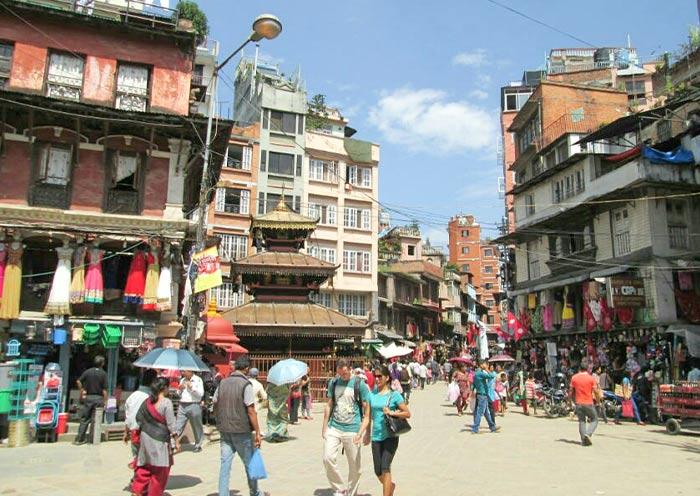
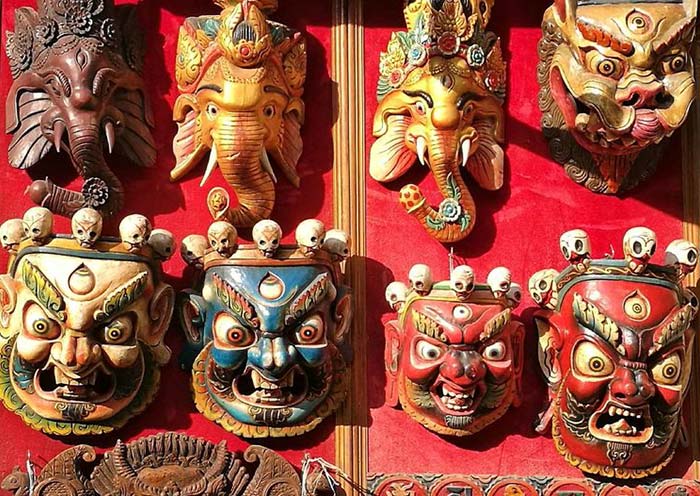
Price: What’s Included & What’s Excluded
What’s Included?
What’s Excluded?
Important Trip Notes for Booking a Private Tibet Tour
All foreign travelers are advised to make their bookings at least one week in advance and send the necessary documents to us for obtaining the permits. However, if you plan to visit Mount Kailash, it is recommended to book at least two weeks in advance, as it may take longer to obtain the necessary permits.
Accommodation & Hotel Condition for Your Tibet Tour
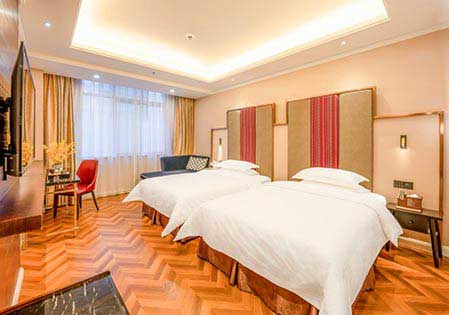
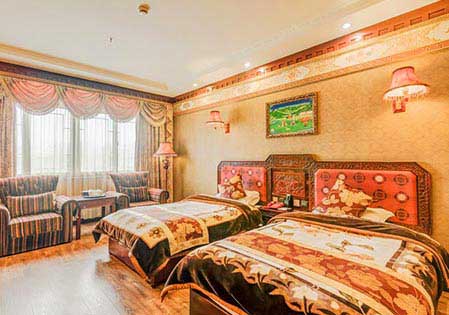
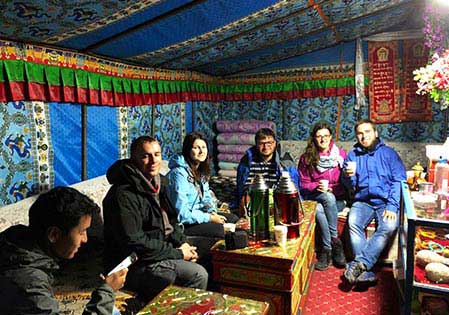
Have a good sleep everyday is very important during your China tour. In a private tour, you can decide on your own which hotel class you want - luxury 5 star, comfortable 4-star or economic 3-star.
All the hotels in each destination we selected are at good location, close to commercial street or tourist attractions. And, all the hotels we use have a business relationship for many years and they have windows, air-conditioners, hot water, showers, wifi... (except for basic accommodation condition when travel to Mount Everest) to ensure you luxury and comfortable sleep experience. The staff can speak English and they will provide you the high quality service. If you have any requirements, you can ask them to help.
Photo Gallery for This Itinerary
Latest Himalaya Tours Reviews from Our Customers

cindy heng
Malaysia
Date of Experience: Sep 07, 2025
Tour Customized by: Abby
You May be Interested in This Tour: Customized Tour

mui m
Vietnam
Highly recommend Asia Odyssey - they planned a fantastic itinerary against our brief for Tibet, Nepal, and Bhutan. Special shoutout to Ms. Mandy who planned our trip, answered all our questions, was incredibly responsive, and was always helpful. She checked in during our trip to make sure we were okay as well. On our trip, our local guides were knowledgeable and kind and our accommodation was comfortable. All-in-all a fantastic experience and highly recommended.
Thank you for a wonderful experience!!
Destination(s): Tibet
Date of Experience: Jun 05, 2025
Tour Customized by: Mandy
You May be Interested in This Tour: Customized Tour

Bhawani Thangaratnam
Malaysia
Date of Experience: Aug 31, 2025
Tour Customized by: Steven
You May be Interested in This Tour: Customized Tour
Price: Request
(Based on a private tour for two people. Price varies depending on program, travel date, number of people.)
Free Enquiry! You don’t need to pay for the reservation.
- United States (+1)
- Australia (+61)
- Singapore (+65)
- Malaysia (+60)
- Philippines (+63)
- Canada (+1)
- Italy (+39)
- Indonesia (+62)
- United Kingdom (+44)
- Spain (+34)
- Mexico (+52)
- Hong Kong (+852)
- Thailand (+66)
- United Arab Emirates (+971)
- New Zealand (+64)
- South Africa (+27)
- Germany (+49)
- Brazil (+55)
- India (+91)
- France (+33)
- Vietnam (+84)
- The Netherlands (+31)
- Saudi Arabia (+966)
- Ireland (+353)
- Argentina (+54)
- Switzerland (+41)
- Romania (+40)
- Pakistan (+92)
- Japan (+81)
- Portugal (+351)
- Bangladesh (+880)
- South Korea (+82)
- Puerto Rico (+1)
- Türkiye (+90)
- China (+86)
- Belgium (+32)
- Qatar (+974)
- Greece (+30)
- Taiwan (+886)
- Austria (+43)
- Poland (+48)
- Israel (+972)
- Chile (+56)
- Sri Lanka (+94)
- Nigeria (+234)
- Peru (+51)
- Colombia (+57)
- Hungary (+36)
- Nepal (+977)
- Denmark (+45)
- Bulgaria (+359)
- Norway (+47)
- Slovenia (+383)
- Sweden (+46)
- Kuwait (+965)
- Costa Rica (+506)
- Ecuador (+593)
- Venezuela (+58)
- Malta (+356)
- Croatia (+385)
- Tunisia (+216)
- Czechia (+420)
- Mongolia (+976)
- Bahrain (+973)
- Mauritius (+230)
- Papua New Guinea (+675)
- Cambodia (+855)
- Dominican Republic (+1)
- Luxembourg (+352)
- Finland (+358)
- Guatemala (+502)
- Myanmar (+95)
- Maldives (+960)
- Slovakia (+421)
- Laos (+856)
- Serbia (+381)
- Brunei (+673)
- Oman (+968)
- Macao (+853)
- Panama (+507)
- Morocco (+212)
- Jordan (+962)
- Georgia (+995)
- Fiji (+679)
- Bolivia (+591)
- Lithuania (+370)
- Bahamas (+1)
- Cyprus (+357)
- Latvia (+371)
- Bhutan (+975)
- Iraq (+964)
- Iran (+98)
- Kenya (+254)
- Jamaica (+1)
- Zimbabwe (+263)
- Azerbaijan (+994)
- Uruguay (+598)
- Estonia (+372)
- Andorra (+376)
- Cameroon (+237)
- Ghana (+233)
- Kazakhstan (+7)
- Nicaragua (+505)
- Egypt (+20)
- Russia (+7)
- Albania (+355)
- Réunion (+262)
- Montenegro (+382)
- Algeria (+213)
- Afghanistan (+93)
- Martinique (+596)
- Uganda (+256)
- Honduras (+504)
- North Macedonia (+389)
- Trinidad and Tobago (+1)
- Suriname (+597)
- Antigua and Barbuda (+1)
- Zambia (+260)
- Ukraine (+380)
- Armenia (+374)
- Barbados (+1)
- Belarus (+375)
- Palestine (+970)
- Lesotho (+266)
- Moldova (+373)
- Ethiopia (+251)
- French Polynesia (+689)
- Gambia (+220)
- Guam (+1)
- Gibraltar (+350)
- Isle of Man (+44)
- New Caledonia (+687)
- El Salvador (+503)
- Comoros (+269)
- Seychelles (+248)
- Chad (+235)
- Samoa (+685)
- Cook Islands (+682)
- Palau (+680)
- Paraguay (+595)
- DR Congo (+243)
- Solomon Islands (+677)




